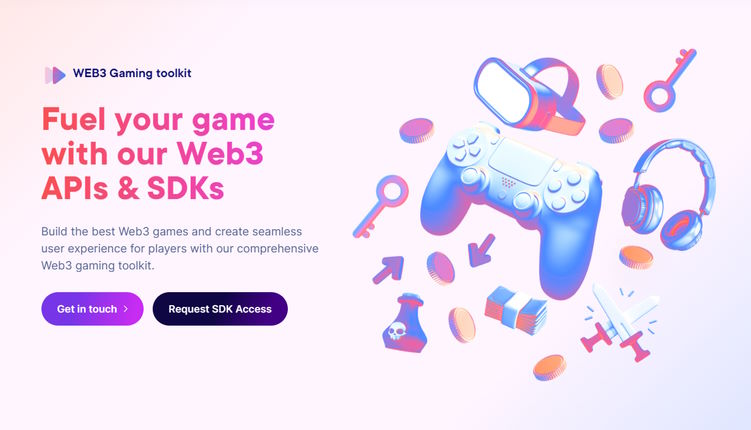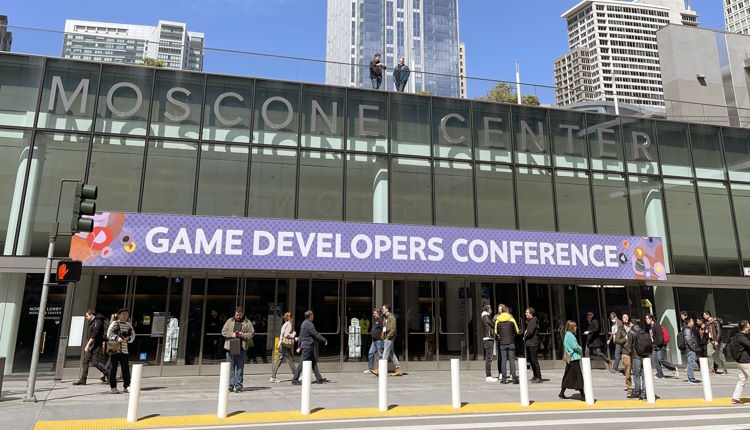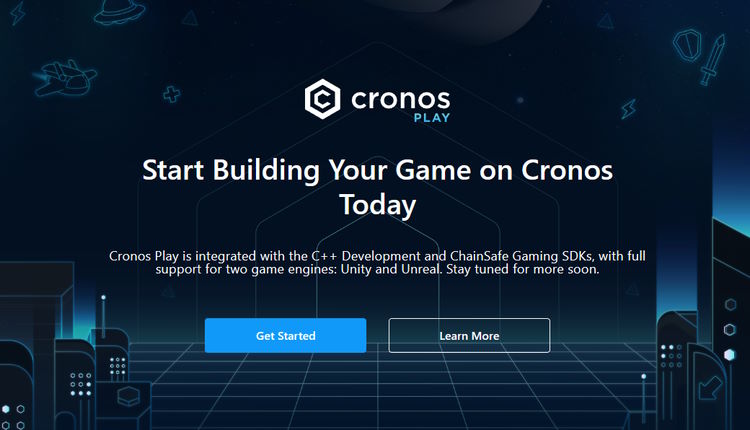Cronos and Venly discuss the future of blockchain gaming

Mainstream adoption of blockchain, the role of NFTs in gaming, and seamless user experiences: three topics that come up repeatedly in conversations about web3 at the conferences BlockchainGamer.biz attends.
Two companies leading the charge towards mass take-up of blockchain are Cronos and Venly. In a joint interview after GDC, BlockchainGamer.biz spoke with Ken Timsit, Head of Cronos Labs, and Stefan Colins, Head of Marketing and Community at Venly. They shared valuable insights into the potential of blockchain games and the tools available to developers.
Cronos is the leading Ethereum-compatible blockchain network built on the Cosmos SDK, supported by Crypto.com and more than 500 other partners and application developers. Cronos’s mission is “to enable its addressable user base of more than 80 million people around the world to experience the full promise of crypto self-custody, decentralized finance, and web3 gaming”.
Meanwhile, Venly is a blockchain technology provider offering end-to-end solutions and industry-agnostic tools that enable web2 businesses and developers to integrate and leverage web3 easily. Its partners include brands such as Atari, Ubisoft and Shopify. With Venly, non-web3 natives can “build digital wallets, dApps and blockchain-agnostic NFT marketplaces without having experience in blockchain engineering”.
These two insiders shed light on the current state and future trajectory of the web3 gaming landscape. They discussed the lessons from web2 and web3 gaming spaces, ongoing challenges, and the user experience provided by their respective companies’ tools and services.
How are you working to foster mainstream adoption in the blockchain gaming industry?
Ken Timsit: Cronos is fostering mainstream adoption of blockchain gaming in two main ways. First, by partnering with Crypto.com, Cronos is addressing a user base of more than 80 million people who are already familiar with crypto, even though they have yet to experience blockchain gaming.
Second, with Cronos Labs, the ecosystem development arm of the Cronos chain, we are deploying a range of support programs and accelerator programs to help experienced game developers become crypto-native and develop sustainable token-based economies.
Stefan Colins: At Venly, one of our primary focuses is to assist in innovating at the development stage of blockchain games. Our Web3 Gaming Toolkit directly facilitates the mainstream adoption of blockchain gaming by streamlining both the build and launch processes for developers. Using our SDK and APIs, developers can design their games with seamless UX, onboard gamers, boost community engagement and enable the minting of in-game assets.
Venly hope this feature will help to inaugurate a healthy flow of blockchain games that may have otherwise remained dormant into mainstream usage over the coming years.

What role do NFTs play in the future of gaming?
Ken Timsit: At its core, blockchain is a revolutionary technology for the storage and transfer of value, which introduces new business model options for game developers. Meanwhile, non-fungible tokens are simply tradable digital assets which can represent game assets or certain levels of memberships and underpin these business models.
Web3 games typically enable players to collect game assets that they can trade with each other, and they often include some form of redistribution of game revenue towards early adopters and/or high performers. In blockchain games, peer-to-peer dynamics are often more prevalent than in traditional games.
Stefan Colins: On a comprehensive scale, NFTs are driving the future of gaming toward a player-first ecosystem whereby user experience is heavily concentrated on the utility of individualized and interoperable in-game assets. This will galvanize a decentralized structure within the gaming world by stripping AAA developers of their hold over players, who will now be able own and transfer their own items across platforms and titles and ultimately dictate the swing of their own experience.
Venly was deliberate in ensuring that NFTs are a central focus of the Web3 Gaming Toolkit, enabling developers to offer users in-game minting and in-game asset stores – both of which should become customary features of blockchain games.
Cronos is fast, cheap and carbon-neutral. As a chain, Cronos consumes very little energy, and the remainder is neutralized by carbon offsets
Ken Timsit, Head of Cronos Labs
We perceived a shift in focus at GDC this year. In previous years it felt like the web3 scene was treating games as an afterthought, a potential way to make money but not something genuinely fun for traditional gamers. But this year, companies demonstrated fun games, offering additional value through blockchain components. Is that a shift you felt, and what does that shift mean for you?
Ken Timsit: The Cronos team was at GDC this year, where we sponsored a booth and hosted panel discussions as well as an industry breakfast event. Across these multiple touchpoints with different industry stakeholders, we definitely noticed a shift in the perception of blockchain gaming, from mildly negative last year, to curious and positive this year.
It takes a long time to deliver a good game, especially one that relies on novel technology, and so it is not surprising that this shift is happening gradually. I think that it also helped that crypto markets are somewhat down, which contributed to the perception that blockchain game developers are here to build, not to make a quick buck.
Stefan Colins: In particular, the increased focus on play-to-own gaming models and how NFTs and web3 gaming offers new experiences to gamers by introducing an element of virtual ownership is something that has really taken a large focus this year.
NFTs have the potential to enrich and transform the state of gaming and the overall user experience. So far, we’ve only just scratched the surface as an industry overall.
Over time, we can expect to see dynamic NFTs that change and evolve based on how a player is playing or how an avatar is performing. In this sense, NFTs are much more than just an asset; rather, they have the ability to store user progress via smart contracts. It’s something we’re really excited about.

What lessons can web3 developers learn from the web2 gaming space and vice versa?
Ken Timsit: Web3 developers must become as disciplined as web2 developers when it comes to creating engaging storylines, optimizing products relentlessly to enhance user retention and technical performance, and adopting sustainable business models.
On the flip side, web2 developers should recognize that blockchain technology enables business model innovation in ways that are as impactful as the prior shift from one-time payment to free-to-play, which led to new ways of playing, and introduced new audiences as well as greater gender diversity. They should embrace and explore the innovation potential of this new technology, particularly in terms of community and peer-to-peer dynamics.
Stefan Colins: The clear and obvious thing to remember for web3 developers is that gaming, regardless of the technology that fuels them, exists to entertain end users. It sounds such a simple thing to say, but if a game itself is not fun and compelling, then no one is going to play. Web3 developers need to be mindful not to pour every ounce of energy into the technicalities of decentralized experiences. It’s all very well having a multitude of sovereign opportunities within the game, but they also need to work hard on developing a storyline that engages users and make the experience playable, sentimental and challenging.
In contrast, web2 developers must become increasingly conscious of the evolutionary shift that is now beginning to occur within their market. Blockchain gaming as a sub-entity of the whole gaming sphere is going to bring unique competition to the table. Developers – whether in console, mobile or VR gaming – are competing for the attention of potential audiences. If there are aspects of blockchain gaming that prove particularly popular amongst these audiences, then web2 developers should not hesitate in attempts to adopt and integrate them where possible.
What other ongoing challenges does the web3 gaming industry face in achieving widespread adoption, and how should we tackle these issues?
Stefan Colins: Widespread adoption of blockchain gaming relies on the notion that there will be widespread production of high-quality blockchain games. Currently, developments are still very much in an experimental stage, and the barriers to entry are still relatively high. Whilst the landscape is becoming increasingly fertile, the variety and quantity of successful blockchain titles is not yet anywhere near close to its potential.
Audiences need choice, and the web3 industry has an ongoing duty to encourage and enable an increasing number of developers to dive deep into their innovations so that they can provide more of it. It is essential that as the industry progresses, a major emphasis is placed on education and resources for new entrants while simultaneously providing tools such as APIs to improve UX and UI, which can facilitate a more seamless entry to this market for traditional web2 developers.
How do you contribute to a seamless user experience for developers and gamers?
Stefan Colins: Venly’s Web3 Gaming Toolkit provides developers with a comprehensive set of tools that empowers them to innovate across the full spectrum of development – from creating a simple and intuitive UX all the way to onboarding users on mass.
With a player-first approach, Venly’s SDK gives developers access to different APIs for building in-game asset stores and provides minting opportunities, wallet solutions and mobile-native experiences. Among other features, these tools essentially streamline the production process and perpetuate the flow of multi-functional experiences toward the increasing pool of end users.
Ken Timsit: Cronos provides game developers with blockchain infrastructure ideally suited to their needs. The network is fast, cheap and carbon-neutral. (As a chain, Cronos consumes very little energy, and the remainder is neutralized by carbon offsets.) Users can easily top-up their crypto wallets from fiat currency thanks to credible, regulated actors like Crypto.com, Transak and Venly.
Finally, Cronos Labs publishes Cronos Play, a suite of developer tools and integrations that streamlines blockchain development in multiple languages and frameworks, including Javascript, Unity, Unreal, and C++.

Venly recently raised investment. How do you plan to leverage this funding?
Stefan Colins: Venly is leveraging the recent Series A to drive innovation and growth through multiple avenues. First and foremost, the hiring of top-level talent and formation of partnerships with key industry players continue to be high priorities in our quest to spearhead ingenuity within our work, which the funding has further facilitated.
Venly is also using the funding to drive the SDKs that enable fast-scale growth in our APIs and eCommerce integrations – the partnership with Shopify being the most recent example. Beyond this, the continued development of our accelerator programme, which gives web3 startups access to the licensing, investment and guidance needed to impact and support the entire blockchain ecosystem, is very much in full swing.
What will the blockchain conversation be about at next year’s GDC?
Stefan Colins: As developers continue to refine user experiences, improving aspects such as cross-platform interoperability, NFT utility and community growth, then it’s fair to assume that blockchain gaming will have made considerable progress toward mass adoption by the time next year’s GDC rolls around.
The rhetoric may then be more concentrated on how the industry can work toward concretizing the decentralized roots of blockchain games. Discussions specifically focused on how DAOs can continue to evolve and ensure that end users move away from being consumers and toward having a more active and influential presence in the industry will come to the forefront.
The clear and obvious thing to remember for web3 developers is that gaming, regardless of the technology that fuels them, exists to entertain end users
Stefan Colins, Head of Marketing and Community at Venly
You can read more interviews with top blockchain gaming companies on BlockchainGamer.biz. The future of web3 gaming will be a hot topic at our upcoming partner events, Dubai GameExpo Summit and PGC Toronto 2023.
Don’t miss out on any news from the blockchain games space: follow us on Twitter and connect with us on LinkedIn.
